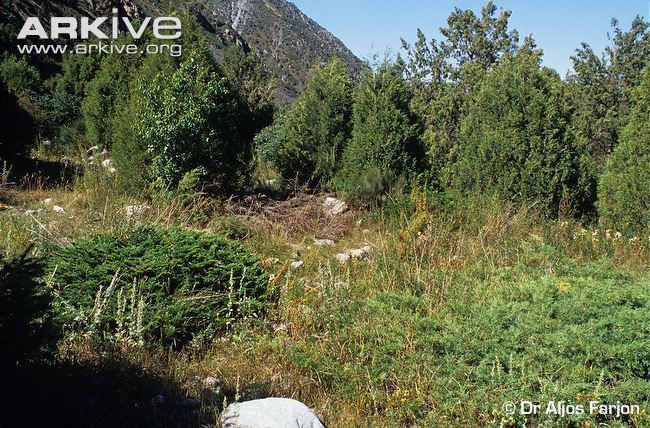Order Pinales Higher classification Juniper | Division Pinophyta Scientific name Juniperus semiglobosa Rank Species | |
 | ||
Similar Juniper, Conifers, Juniperus squamata, Juniperus horizontalis, Juniperus conferta | ||
Juniperus semiglobosa (English: Himalayan Pencil Juniper; Chinese: 昆仑多子柏; pinyin: Kūnlún duō zi bǎi) is a species of juniper native to the mountains of Central Asia, in northeastern Afghanistan, westernmost China (Xinjiang), northern Pakistan, southeastern Kazakhstan, Kyrgyzstan, western Nepal, northern Republic of India, Tajikistan, and Uzbekistan. It grows at altitudes of 1,550–4,350 metres (5,090–14,270 ft) .
Contents
Description
Juniperus semiglobosa is an evergreen coniferous shrub or small to medium-sized tree growing to 5–15 metres (16–49 ft) (rarely 20 metres (66 ft)) tall, with a trunk up to 1.2 metres (3.9 ft) (rarely to 2–6 metres (6.6–19.7 ft)) diameter with flaky bark. The leaves are of two forms, juvenile needle-like leaves 3–7 mm long on seedlings and occasionally (regrowth after browsing damage) on adult plants, and adult scale-leaves 1–2 mm long on older plants; they are arranged in decussate opposite pairs or whorls of three.
The cones are flattened globose (from which the name semiglobosa) to bi-lobed or triangular, berry-like, 4–6 mm long and 4–8 mm across, blue-black, and contain two or three seeds; they are mature in about 18 months. The pollen cones are 3–5 mm long, and shed their pollen in spring. It is usually dioecious (male and female cones on separate plants), but occasionally monoecious (male and female cones on the same plant).
Varieties
A variety Juniperus semiglobosa var. talassica has been described from Kyrgyzstan as having sweeter cone pulp, but does not differ from the type in genetics or leaf chemistry, and is not usually regarded as distinct.
